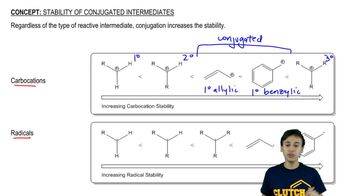Predict the product(s) that would result when the following molecules are allowed to react under the following conditions: (i) 1. BH3 2. NaOH, H2O2 (ii) 1. Hg(OAc)2 2. NaBH4 (iii) H2SO4 , H2O (iv) 1. OsO4 2. NaHSO3 (v) H2O (vi) NaOH, H2O . If there is no reaction, write 'no reaction.'
(d)







